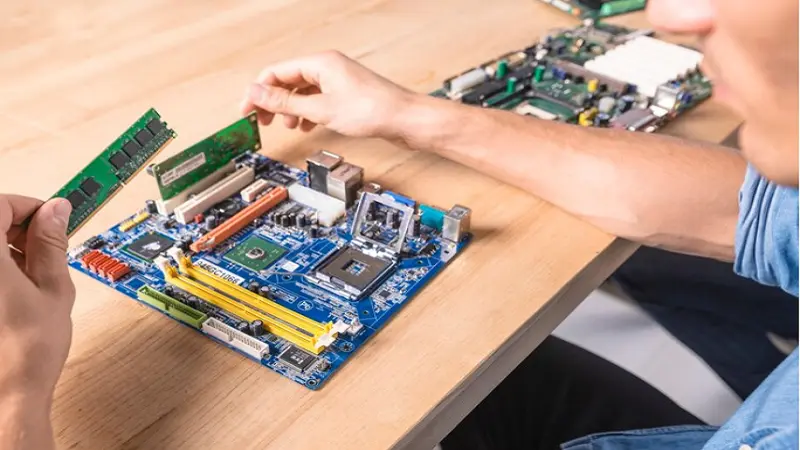In the rapidly evolving world of software development, microservices architecture has emerged as a powerful way to design and build scalable, maintainable applications. Micronaut, a modern, JVM-based framework, has gained popularity for its lightweight and efficient approach to microservices development. One of the tools that can significantly streamline the development process is Building Micronaut Microservices Using MicrostarterCLI. This article delves into the intricacies of Building Micronaut Microservices Using MicrostarterCLI, providing a detailed, step-by-step guide for developers seeking to harness the full potential of this combination.
Understanding Micronaut and MicrostarterCLI
What is Micronaut?
Micronaut is a JVM-based framework designed for Building Micronaut Microservices Using MicrostarterCLI modular, easily testable microservices and serverless applications. It offers many features that make it ideal for microservices development:
- Low Memory Footprint: Micronaut is designed to be lightweight, minimizing the overhead that traditional frameworks often impose.
- Fast Startup Time: Due to its compile-time dependency injection and optimization techniques, Micronaut applications start up quickly.
- Built-in Dependency Injection: Micronaut provides a sophisticated dependency injection mechanism that is both powerful and easy to use.
- Native Image Support: With support for GraalVM native images, Micronaut applications can be compiled into native executables for even faster startup times and lower memory consumption.
What is MicrostarterCLI?
Building Micronaut Microservices Using MicrostarterCLI is a command-line tool that simplifies the process of starting new Micronaut projects. It helps developers quickly generate project templates, configure dependencies, and set up initial codebases with minimal effort. By automating many of the repetitive tasks involved in setting up a new project, MicrostarterCLI allows developers to focus on writing code and building features.
Getting Started with MicrostarterCLI
Prerequisites
Before diving into the details of using MicrostarterCLI, ensure you have the following prerequisites:
- Java Development Kit (JDK): Micronaut is a Java-based framework, so you’ll need to have JDK 8 or later installed on your machine.
- Micronaut SDK: Make sure you have the Micronaut SDK installed. You can download it from the Micronaut website.
- MicrostarterCLI: Download and install MicrostarterCLI. Instructions for installation can be found in the official documentation.
Installing MicrostarterCLI
To install MicrostarterCLI, follow these steps:
- Download the CLI Tool: You can download the CLI tool from the official Micronaut website or use a package manager like Homebrew (for macOS) or Chocolatey (for Windows).
- Install the Tool: Follow the installation instructions provided on the website. Typically, this involves running an installation script or command.
Verify Installation: After installation, verify that MicrostarterCLI is correctly installed by running the following command:
microstarter –version
This should display the version number of MicrostarterCLI if it was installed correctly.
Creating a New Micronaut Microservice
Step 1: Initialize a New Project
With MicrostarterCLI installed, you can quickly create a new Micronaut project using the create command. This command generates a project scaffold with the necessary files and directories.
Run the following command to create a new project:
microstarter create my-micronaut-service
Replace my-micronaut-service with your desired project name. This command will create a new directory with the specified name and populate it with the initial project structure.
Step 2: Configure Your Project
After generating the project, navigate to the project directory:
cd my-micronaut-service
Micronaut projects come with a default configuration, but you may want to customize it according to your needs. Configuration files are located in the src/main/resources directory. You can adjust settings such as database connections, server ports, and logging levels in these files.
Step 3: Add Dependencies
Micronaut uses a build tool like Gradle or Maven to manage dependencies. By default, your project will include basic dependencies, but you might need additional libraries depending on your use case.
For example, to add support for a PostgreSQL database, you would modify your build.gradle or pom.xml file to include the necessary dependency. In Gradle, you would add:
dependencies {
implementation(“org.postgresql:postgresql:42.2.5”)
}
After adding dependencies, run the build command to fetch and include them in your project:
./gradlew build
Step 4: Create Your First Microservice
Micronaut makes it easy to create RESTful microservices. To define a simple REST controller, create a new Java class in the src/main/java directory. For example, create a GreetingController class:
package com. example;
import io.micronaut.http.annotation.Controller;
import io.micronaut.http.annotation.Get;
@Controller(“/greeting”)
public class GreetingController {
@Get(“/”)
public String greet() {
return “Hello, Micronaut!”;
}
}
This code snippet defines a REST controller with a single endpoint that returns a greeting message.
Step 5: Run Your Application
To run your Micronaut application, use the following command:
./gradlew run
By default, Micronaut applications run on port 8080. You can access your service by navigating to http://localhost:8080/greeting in your web browser or using a tool like curl to make a request:
curl http://localhost:8080/greeting
You should see the message “Hello, Micronaut!” in response.
Testing and Building Your Microservice
Writing Tests
Building Micronaut Microservices Using MicrostarterCLI supports writing tests with JUnit or Spock. Tests are located in the src/test/java directory. For example, you can create a test class for your GreetingController:
package com. example;
import io.micronaut.test.annotation.MicronautTest;
import org.junit.jupiter.api.Test;
import org.springframework.beans.factory.annotation.Autowired;
import io.micronaut.http.HttpResponse;
import io.micronaut.http.client.RxHttpClient;
import javax.inject.Inject;
import static org.junit.jupiter.api.Assertions.assertEquals;
@MicronautTest
public class GreetingControllerTest {
@Inject
RxHttpClient client;
@Test
void testGreeting() {
HttpResponse<String> response = client.toBlocking().exchange(“/greeting”, String.class);
assertEquals(“Hello, Micronaut!”, response.body());
}
}
Building the Application
Once you’re satisfied with your application, you can build it into a deployable JAR file:
./gradlew assemble
The built JAR file will be located in the build/libs directory. You can deploy this JAR file to your preferred environment or containerize it for deployment using Docker.
Advanced Topics
Configuring for Production
When preparing your Building Micronaut Microservices Using MicrostarterCLI for production, consider configuring environment-specific settings such as:
- Database Connection Pools: Optimize database connection settings for performance.
- Security: Implement security features such as authentication and authorization.
- Logging: Configure logging levels and outputs for better observability.
Integrating with Other Services
Micronaut microservices often need to interact with other services or systems. You can integrate with external APIs, databases, and messaging systems using Building Micronaut Microservices Using MicrostarterCLI extensive support for various protocols and technologies.
Using Native Images
For even faster startup times and reduced memory usage, you can compile your Building Micronaut Microservices Using MicrostarterCLI application into a native image using GraalVM. This involves configuring your build process to generate a native executable.
Conclusion
Building Micronaut Microservices Using MicrostarterCLI offers a streamlined, efficient approach to developing scalable, maintainable applications. With its powerful features and ease of use, Micronaut provides an excellent foundation for modern microservices architecture. By leveraging MicrostarterCLI, you can quickly set up new projects, manage dependencies, and focus on delivering high-quality software.













